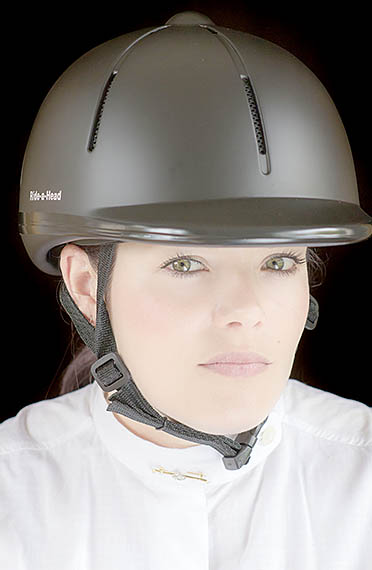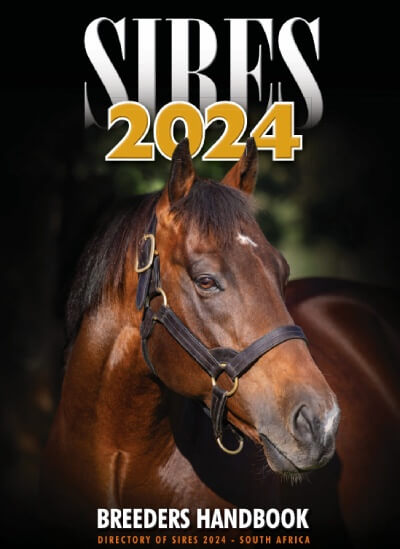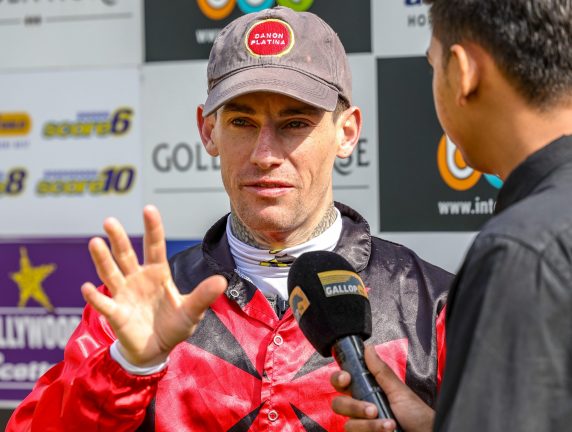
Ride A Head Helmet
Ian Fleming once described a horse as ‘Dangerous at both ends and uncomfortable in the middle’ and cartoonists have long enjoyed depicting hapless riders sailing through the air in a graceful arc before hitting the ground head first. In fact, riding parlance even refers to falling off as being planted. To be fair, it is kind of funny to see someone hitting the dirt, but less so when people get hurt.
I have to confess that I used to be of the “it will never happen to me” brigade. I don’t like wearing seatbelts and I never rode with a helmet unless I absolutely had to. Hot, uncomfortable, unflattering things!!
But these days I look at life a little differently. Perhaps it’s advancing age, but I’m a lot more enthused about riding a perfect figure of 8 in the dressage arena than breaking the sound barrier belting down a track. My riding friends jokingly refer to it as having reached the age where we join the “splat” club (apparently young people bounce, old people splat). While I’m not labelling myself as old just yet, I had a fall last year that officially signalled my admission to Club Splat. Fortunately I landed on a different extremity and saved my helmet, but it was a timely wake-up call and I no longer get on a horse without a skull cap. Yes, I still find them hot and uncomfortable and hideously unflattering, but as the SO frequently reprimands me, so is dribbling!
It happens to the best of us
On 3 March 2010, a young US Olympic dressage rider by the name of Courtney King-Dye was schooling her horse when it tripped and fell. Courtney was not wearing a helmet at the time and sustained what the medical community call a TBI (traumatic brain injury). She was in a coma for four weeks. Three years down the road Courtney continues to undergo rehabilitation therapy, the majority of which is not covered by insurance.
“Many people emphasize the daily struggle, but it’s hard to realise that the struggle is all day every day. Speaking is hard. Walking is hard. I had to learn to eat with my left hand, and that’s not pretty,” said King-Dye.
Because Courtney is young, successful and pretty, her accident attracted huge attention in the riding community and inspired the creation of Riders4Helmets. The goal of the campaign is to educate equestrians about the benefits of wearing a certified, properly fitting and secured helmet.
Riders4Helmets
Riders4Helmets held their first National Helmet Awareness Day on 10 July 2010. The initiative was endorsed by the US Equestrian Federation and Riders4Helmets had a stall at the Kentucky Horse Park, where supporters included Eclipse Award winning jockey Frankie Lovato Jr. More than 200 equestrian retailers and a number of helmet manufacturers came on board offering discounts on helmet purchases and in fact, it was such a success and attracted so much interest from all over the world that in 2011, Helmet Awareness Day went global.
The 11 June 2011 International Helmet Awareness day featured 500 retailers and 12 helmet brands. By 2012 they had 14 helmet brands on board and a host of retailers, media, webinar speakers and a host of participants across the world.
While listening to people extol the virtues of hat wearing may sound like torture, it actually made for a really interesting day. Speakers included helmet manufacturers who explained the science of how helmets are made and how they prevent injury as well as a variety of experts in related fields.
I learned that there is a tremendous amount of science behind equestrian helmet design. Apparently, helmets for sports like cycling, canoeing, mountain biking, etc, are multiple impact helmets, designed to take a number of hits. In contrast, equestrian helmets are specifically designed for bigger single impacts as the dangers we face are that much more varied and potentially dangerous. It is interesting to see how helmets are constructed too. They are designed on the scientific principle that energy can’t be created or destroyed – it has to be transferred and thus a helmet can be considered an ‘energy management system’ if you like. There is usually an outer fibre-glass shell, then a filling of something called Expanded Polystyrene (EPS), which is the really clever stuff. It’s a sort of microscopic bubble-wrap and is designed to compress and degrade on impact. Sort of like the crumple zone in your car, it absorbs the damage so that you don’t have to. Helmet manufacturers conduct extensive research into falls and how their helmets cope and it is interesting to note that most hats don’t show any external damage even after a fairly severe blow. The only way to check is to take them apart and examine that compressed polystyrene inner. Obviously with each impact the safety and efficiency of a helmet is compromised, so it is extremely important that hats are replaced after a significant impact.
Medical perspective
Statistics reflect that horse riders have a similar rate of serious head injury as motor cycle riders. There are lots of interesting and complicated equations for the speeds and forces that come into play when one takes a fall, but apparently, serious head injuries are determined more by how far you are off the ground than your forward speed. A fall from a height of 3 feet or higher is all it takes to suffer a serious brain injury (and just out of interest, one is approx. 13ft from the ground if you’re on a horse).
A particularly arresting speaker was Dr Lola Chambless, a neurosurgeon at Vanderbilt University Medical Centre who gave a perspective on Traumatic Brain Injuries. “When I sit down a family member and tell them their loved one is in critical condition and I cannot predict whether they will live or die, or how they are going to live, they would do anything to change that situation, give anything, do anything, to make that go away. The challenge that faces all of us, is making people see that before it happens, when they have the opportunity to do something and not letting it ever get to that point.
“We see patients who have incredible, miraculous recoveries, which is so exciting. Sometimes they are patients I have operated on and some are patients that I have observed and haven’t operated on, and they do amazingly. For every one of those, I have about ten who don’t have a miraculous recovery.”
Fortunately it seems that the Riders4Helmets initiative is gaining momentum. Last year’s London 2012 Olympics is the first Games in which riders have worn helmets and British dressage superstar Charlotte Dujardin became the first to win a gold medal after riding in a crash hat. During a BBC interview she admitted that she had fractured her skull through not wearing a hat and said “I was so lucky to escape from that and now, it’s something I always do. I feel unsafe without my hat on. People say you don’t always need it but for me, especially in this kind of atmosphere, you never know what can happen.”
In fact, even HRH Queen Elizabeth has come on board and in April this year, Buckingham Palace issued an announcement simply stating “Her Majesty Queen Elizabeth II has made the decision to trade in her Hermes scarf for a helmet while riding.”
Health & Safety
Health and safety regulations are being tightened up the world over and racing is no exception. Following a recent spate of work rider injuries, the NHRA issued a notice to all trainers with a reminder of the Operators Conditions 1.9 that “All persons riding work at training centres must wear a skullcap and an approved body protector in terms of the NHRA rules.”
The NHRA rule with regard to skull caps reads as follows:-
58.9.1 Every PERSON when riding a HORSE, shall wear a serviceable skull cap of a type approved by the CHIEF EXECUTIVE.
While the rule has previously been interpreted as only applying to people riding work, the wording is being changed so that any person on the back of a horse at any time is required to wear an approved skull cap. The skull caps that qualify for approval need to have at least an EN1384 safety standard, although anyone who has existing skull caps or protective head gear that they are unsure about, may submit these to their local NHA executives for examination. If it meets with the Chief Executive’s approval, it will be added to the list of approved skull caps.
Obviously with current economic constraints, the rands and cents of getting a busy racing yard’s employees up to speed and in line with the current requirements is not going to be an easy or a cheap exercise. I spoke to Darryl Gershow at the Western Shoppe about the available options.
Darryl advises that they currently carry two skull caps that comply with the standards required by the NHRA. The first is the Ride-A-Head helmet which is lightweight, adjustable and suitable for general riding use. It carries the EN1384 Safety Standard but does feature a fixed peak and so is not recommended for fast work. The Ride-A-Head was retailing at around R430, but the Western Shoppe have completely sold out and are currently awaiting their next consignment of stock. The new price will unfortunately depend on the exchange rate.
The second option is the Capriole Skull Cap. This helmet also conforms to the EN1384 Safety Standard and is popular amongst Eventing riders. It is a skull cap in the true sense of the word, does not have a peak and is deemed suitable for fast track work. These currently retail at around R630 including VAT.
Obviously there will be logistical problems in getting everyone compliant, so the NHRA have set a provisional deadline of 1 October 2013 for all yards to get up to speed.
The NHRA’s Racing Control Executive, David McGillivray said that he was not expecting the transition to be entirely smooth. “But these are the rules and we all choose to race under them and this is not a new rule by any means. All international racing jurisdictions have strict rules with regard to safety wear and to be honest, South Africa has really been getting away with it for years.”
I understand that the costs will be high, but for those in our community who do not have the means for private insurance and healthcare, the stakes are even higher. I will leave you with a last thought from Dr Lola Chambless:-
“I will be brutally honest. The ones that you lose when they are in the hospital it is very very sad, but are not the saddest. The saddest are the ones that survive in a way where they can never communicate, they can never take care of any aspect of their own care, they have innumerous complications and re-admissions to the hospital over many, many, many years wearing out all of the capacity of their families.
“The financial capacity, the emotional capacity. We see families divorce and breaking apart and families torn apart trying to care for this loved one of theirs. That is the part that just absolutely breaks your heart. And when you see those situations, in situations like riders who have fallen, it breaks your heart because it is preventable.”
– ROBYN LOUW








